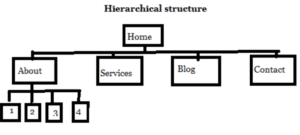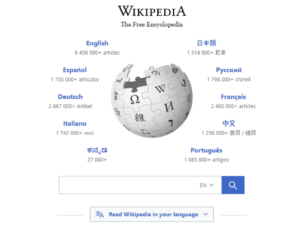If you’re still unsure about where to start, we can help.
With our free tips and guidance, you can build a better digital marketing setup. But if you don’t have the time or resources to manage it all on your own, we can support you. Get in touch to find out how.
When people and crawlers visit your website, they will likely land on different pages. A messy site structure will confuse them and lead to higher bounce rates and indexing problems. Stats show that internet users will leave a website if it has poor navigation (61.5%), layout (38%), and design (73.1%).
So, how do you ensure your site has the best structure?

First, know the types
There are four major types of website SEO structure, namely:
1. Sequential or linear structure
When you’re checking out from an eCommerce site, you often face a linear website structure where the pages are revealed based on priority. So, first, you see the cart page with a checkout call to action. The shipping options page follows that. Then the payment page.

This site structure works great for simple websites with pages that should be visited in chronological order, e.g., campaigns with multiple phases, online courses, and checkouts.
2. Hierarchical or tree structure
This is one of the most commonly used site structures on the internet. Here pages are grouped based on similarities and roles, from the broader category down to the most specific.
So, let’s say you have a digital marketing website. Traditionally, your tree structure would start with the Homepage or the page with the most traffic, then move to the major subcategories and down to individual pages.

If you’re building a website with many pages and much information, you might want this structure. It will help you keep your pages organised, avoid repeating topics/products and will make it easy for humans and crawlers to navigate your site.
3. Database
The database structure is a more complex structure that works well for businesses with lots of information and data. This structure allows them the flexibility to build on the site’s structure over time.
Unlike the structures above, a database structure doesn’t require the owner to plan and map out all the category pages the site will have before building. So, you can start with four main category pages and add more later. This is called the bottom-up method. It normally takes the shape of a table (rows and columns) and requires tags and metadata to keep track of each data created.
Database structure leans greatly on the site’s search feature for information retrieval. However, it can be difficult for users and crawlers to navigate.
If you choose to use this medium, you will need experienced programmers on your team to ensure that none of your data is lost over time.


Support Services
Explore our services to see how we can support you.
We work with clients of all sizes, ambitions, and expectations, and with budgets that start from as little as £150pm to over £1.5m each year. Explore our simple-to-understand packages that take the pressure off, so that you can focus on what you do best.
4. Matrix
This site structure is the oldest on the internet and has no defined shape. Every page is equal – no categories or subcategories exist. So, similar pages are only discovered based on inner linking and the search feature.
Unless you’re trying to build an online library of information like Wikipedia, this page structure can only work for narrow-focused topics with numerous connecting topics.

However, knowing what a website with this structure fully covers, can be difficult for visitors.
So, how do I pick the optimum site structure for my site?
When picking a site structure, focus on your target audience, your business model, and how you want to engage your audience.
So, let’s say you are a company offering various products and services to your audience. If you want to keep things organised and easy for your visitors, a hierarchical structure can do the trick. If you have an eCommerce site, a sequential (or linear) site structure may be most suitable. A little bit of research and an understanding of your audience are your best guides. Good luck!

Get a free website health-check.
Find out if your website is depriving you of visitors. Request our free website health-check to identify common issues with speed, user experience, and performance. We’ll deliver this in a clear report along with some basic recommendations and quick fixes.
Learn more about health-checks
Frequently asked questions
-
People visit your website with visual and informational expectations. If the information isn’t structured in a friendly manner or your design is outdated, two-thirds of your visitors might leave for a competitor with a better experience. So, what do you need to do? Look no further.
-
With all the responsibilities you and your team shoulder, it’s unrealistic and impossible to try to track your site’s SEO performance manually. Here are some of the bests on the market to meet your needs.
-
Site engagement is the actions visitors take while on your website. This analysis includes various performance indicators that allow you to determine if your page offers value to your visitors and which areas to improve. Here are some tips to help you with that.
-
Your website statistics tell you where your visitors are coming from and how they are engaging with your site. Here are the main metrics to consider.
Start a Conversation
Request a call-back to see how we can support your digital growth.















